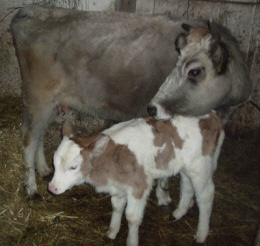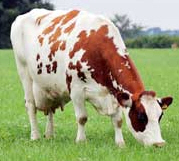



Busa
History
The breed of cattle called Busa or sometimes Busha, Bosnian or Illyrian are a small native breed which belong to a group of primitive short horned cattle (Bos brachyceros europaeus) with multiple strains of the breed being found across the Balkans. Some sources state that the Busa has existed around the Balkan Peninsula since Neolithic times. Photo courtesy of Zoran Petrov, Busa breeder, Serbia |
During the civil war (in Bosnia) in the 1990's, the Yugoslav army brought Busa in from Serbia, these cattle were all used as a meat supply. So although the Busa is sometimes referred to as Bosnian the use of this name is incorrect as the majority of the Busa population is in the Southern Balkans and found in the mountainous regions of Serbia.
Today in Kosovo, cattle are the main source of milk and meat with small scale farmers making up 95% of the industry. Research shows that the Busa in Kosovo is nearly the only breed which provides genetic bases for the majority of crosses in the country.
Today a pure Busa is very rare and generally are found in mountainous, hilly areas of Serbia. There is a herdbook for the Busa, which is helping the determination of the different strains and increasing numbers of the breed.
Characteristics
Busa colour varies according to the regional strain. For example the strain from the Metohija region of Yugosalvia are red, while the Macedonian strain is blue-grey. In Serbia there are three strains - black (considered the oldest), red and grey.They have a compact conformation, the average cow stands 104cm at the withers and weighs between 230 and 270kgs. The average bull measures 115cm at the withers and weighs between 340 and 430kgs.
The breed are very resistant to disease, internal and external parasites, plus survive well with a minimum ammount of management, low feed and natural grazing.
It is also said that this breed is very clean as they defacate in one place only compared to other cattle which go anywhere.
The milk production is very efficient compared to their small size, each lactation averages 1400kgs over a 240-280 day period. The calves are born at about 15 to 22kgs and put 500gms on per day.
Statistics
Comparative
Distribution
Busa can be found throughout southern Yugoslavia, Croatia, Bosnia, Macedonia and Serbia. Breeding programs and associations are being set up to determine breed strains and standards as well as to keep Busa numbers constant.References (the above information was cited from the following sites)
www.ansi.okstate.edu
www.save-foundation.net
Zoran Petrov


